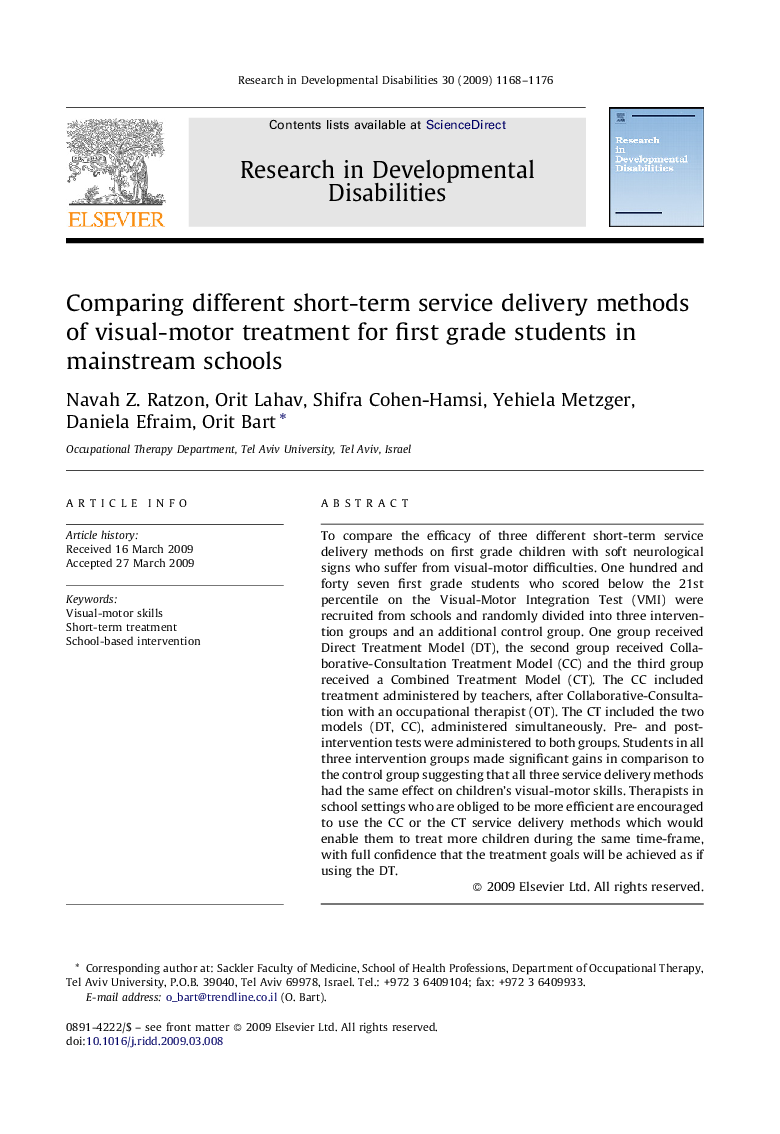| Article ID | Journal | Published Year | Pages | File Type |
|---|---|---|---|---|
| 372000 | Research in Developmental Disabilities | 2009 | 9 Pages |
To compare the efficacy of three different short-term service delivery methods on first grade children with soft neurological signs who suffer from visual-motor difficulties. One hundred and forty seven first grade students who scored below the 21st percentile on the Visual-Motor Integration Test (VMI) were recruited from schools and randomly divided into three intervention groups and an additional control group. One group received Direct Treatment Model (DT), the second group received Collaborative-Consultation Treatment Model (CC) and the third group received a Combined Treatment Model (CT). The CC included treatment administered by teachers, after Collaborative-Consultation with an occupational therapist (OT). The CT included the two models (DT, CC), administered simultaneously. Pre- and post-intervention tests were administered to both groups. Students in all three intervention groups made significant gains in comparison to the control group suggesting that all three service delivery methods had the same effect on children's visual-motor skills. Therapists in school settings who are obliged to be more efficient are encouraged to use the CC or the CT service delivery methods which would enable them to treat more children during the same time-frame, with full confidence that the treatment goals will be achieved as if using the DT.
